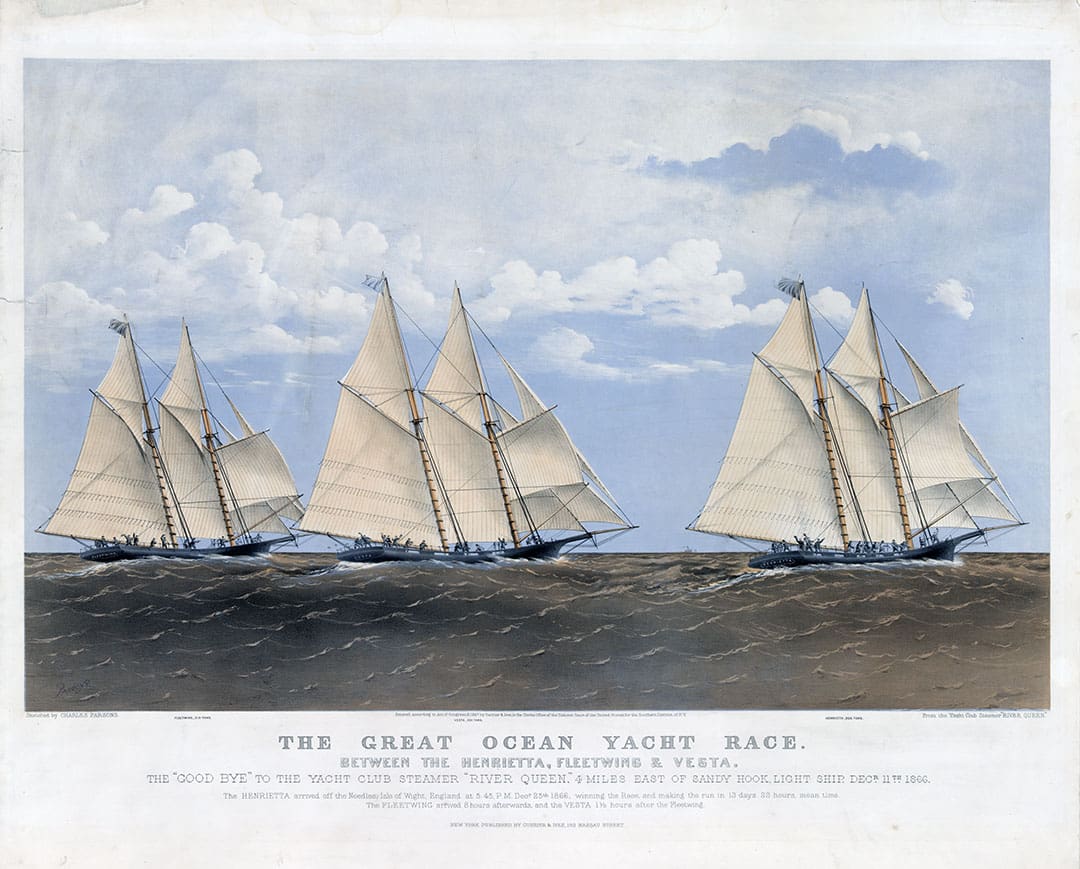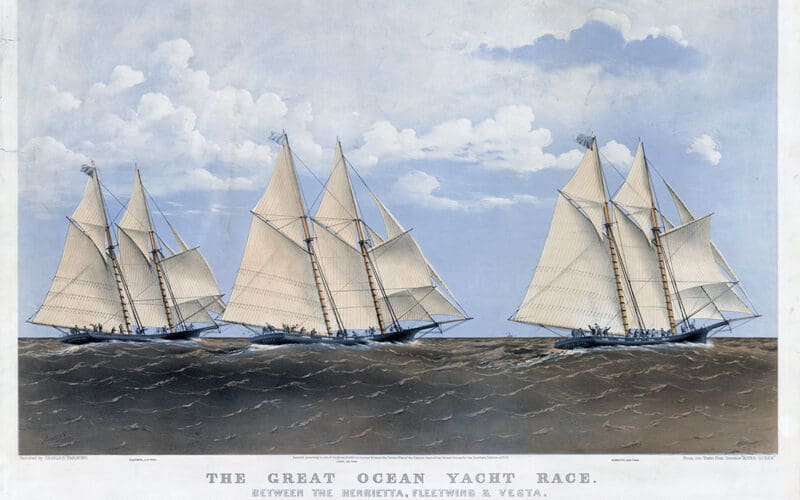
he origins of transoceanic yacht racing trace back to a cold October night in 1866 at the Union Club in New York City. On that night, Pierre Lorillard, George Osgood, and James Gordon Bennett — scions of different fortunes, Lorillard of tobacco, Osgood of finance, and Bennett of the New York Herald — were drinking and bragging about their respective schooner-rigged yachts. They had all raced against each other, short distances locally, and as the evening wore on they decided they should test the mettle of their ships by racing from Sandy Hook, New Jersey, to The Needles at the western tip of the Isle of Wight, with a winner-take-all jackpot of $90,000 (about $3 million today). Why not? Worse decisions have been made under the influence!
Lorillard had just purchased Vesta, a lightweight shoal draft, centerboard schooner of 106 feet, built in City Island. It was fast, and of the three vessels was possibly the most unsuited for a winter North Atlantic race. Bennett owned Henrietta built in 1862 and the schooner had worked in New York Harbor as a customs collector during the Civil War. Osgood’s Fleetwing, was heavy, narrow, and previously had beaten the others in local races. All three were members of the New York Yacht Club and were anxious to expand their cruising grounds. They proposed that the race take place in a couple of months on the 11th of December. The following day they went to the New York Yacht Club where the race was endorsed by the members.
Young Bennett was the only one of the three boat owners to actually make the passage. All three men wanted their boat to win the race, but they also wanted to establish a new sailing record that up to that point was held by the clipper ship James Bains, which had made the passage from Sandy Hook in 12 days and 6 hours.
On December 11, snow was falling as spectator boats full of well-wishers bobbed in the seaway at Sandy Hook. The wind was cold and brisk from the southwest. The three racers raised sail and off they went, Fleetwing being the favored in the betting. All three boats were relatively close to each other for a week. Then they ran into a strong southwesterly gale.
Henrietta hove to and rode out the storm. Vesta was not able to heave to and headed north to get out of the worst of it. Fleetwing carried on with all sails until a huge sea swept the deck, washing six sailors from the cockpit overboard. All the boats finished within a short time of each other, with Henrietta taking the honors. There were celebrations and even a visit to Queen Victoria.
We will have Capt. “Bully” Samuels of Henrietta take a noon sight of the sun’s lower limb on December 14th, and we are using the 2022 Nautical Almanac. The DR of Henrietta is N 39° 45’ by W 70° 25’. Height of eye is 15 feet and there is no sextant error.
The Hs is 26° 49.8’.
A. Find time in GMT of local apparent noon (LAN).
B. Calculate Ho.
C. Find latitude at noon.

